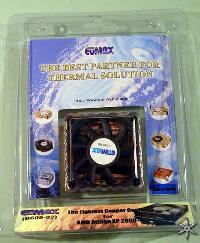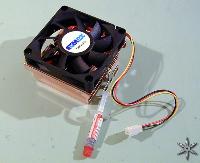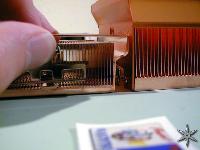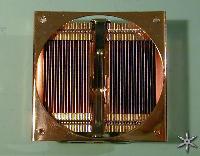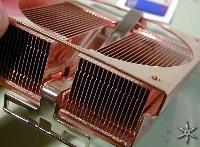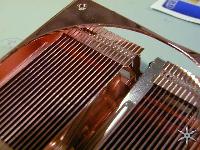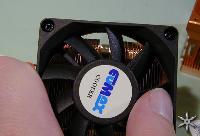After careful consideration I have decided to transfer all hardware review activities to a new domain. I purchased Hardwareasylum.com in 2012 and have been working hard to build a new and improved Ninjalane on that domain. If you are reading this you have reached one of the archived articles, news, projects and/or reviews that were left behind during the site migration.
Please update your bookmarks and be sure to visit the new and improved Ninjalane at Hardwareasylum.com
Eumax B605-02 Heatsink
Author: Dennis Garcia
Published: Wednesday, March 26, 2003
Introduction
Introduction
For the system builder choosing the proper heatsink can be rather difficult task. Though usually the best choice is an equal balance between cooling capacity, fan noise, and weight. Heatsink material plays a big role in this since typically copper coolers have amazing cooling capacity that is often offset by their extreme weight and excessive fan noise.
As some of us know copper loves to consume heat and does so very well making the material a great choice for the avid overclocker. The only problem is copper also likes to hold on to this heat, (one of the reasons the hot water pipes in your house are made from copper) To aid in the heat exchange between metal and air most copper coolers employ a series of thin fins across the heatsink, longer fins tend to cool better than shorter ones but also require higher airflow to make them efficient.
As some of us know copper loves to consume heat and does so very well making the material a great choice for the avid overclocker. The only problem is copper also likes to hold on to this heat, (one of the reasons the hot water pipes in your house are made from copper) To aid in the heat exchange between metal and air most copper coolers employ a series of thin fins across the heatsink, longer fins tend to cool better than shorter ones but also require higher airflow to make them efficient.
The packaging is rather simple but gets the job done. Inside you get a heatsink and a small tube of thermal paste.
The Eumax B605-02 has claimed to be the lightest all copper cooler for the Athlon 2800+ so I did a quick size comparison between the Eumax B605-02 and the CoolerMaster XDreamSE. You will notice right away the size difference; this plays a key role in the overall weight of the heatsink but also affects the cooling efficiency.
Taking a closer look
The copper fins do not appear to be skived but rather appear to be shaped and bonded to the heatsink. The upper edges are reinforced for strength; the only downside is that the reinforcements create a nice blockage right under the high velocity area of the fan.
You will also notice a formed copper channel where the retention clip resides. During installation the retention clip came out of that channel and ended up resting right on the upper edges if this channel making the process of clipping the heatsink down very difficult. (impossible in this instance) Of course the channel was placed there to increase pressure on the CPU core but the sides really should have been extended much higher for easier installation.
The next photos will help illustrate one of the design issues, Starting from the outside of the fan we have an air gap, this is followed by the fin reinforcements, with the heatinsk opening up towards the center of the fan. As we all know airflow from a fan like this moves through the fan in a cone shape making the area under the fan motor a low-pressure dead spot.
The two sides adjacent to this are completely open and is where 95% of the cooling takes place. Personally I would have liked to see a short fan shroud around all sides of this heatsink along with a completely open fin design to increase cooling efficiency.
Additional Info
The fan mounting bracket appears to be the only solid piece of metal formed from the copper base. This leaves two sides of the cooler completely open while the other two remain completely closed.
The fan on this heatsink is 70x70x15mm in size and rotates at 4400rpm. The documentation claims that this fan will move 39cfm at 35db, which is pretty impressive and relatively quiet.
The fan on this heatsink is 70x70x15mm in size and rotates at 4400rpm. The documentation claims that this fan will move 39cfm at 35db, which is pretty impressive and relatively quiet.

